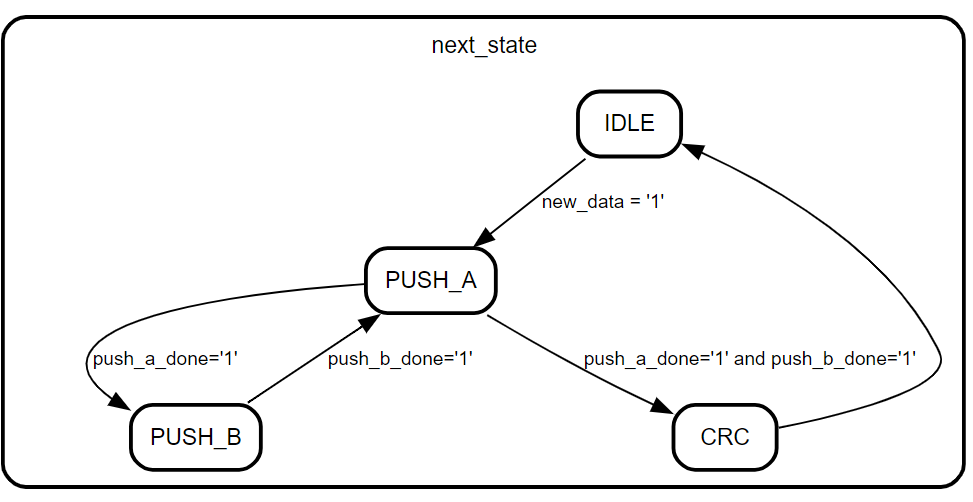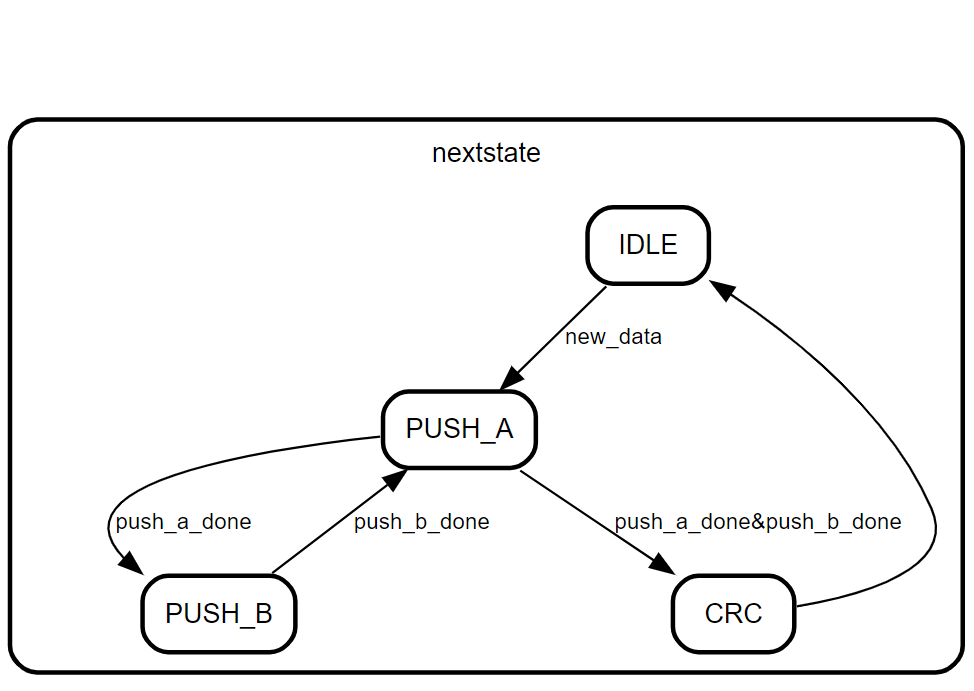Examples
VHDL
Lets Look at the following VHDL:
library ieee;
use ieee.std_logic_1164.all;
use ieee.numeric_std.all;
entity vhdl_sm is
port (
clk : in std_logic;
reset : in std_logic;
);
end entity vhdl_sm;
architecture rtl of vhdl_sm is
type sm_t is (IDLE,PUSH_A,PUSH_B,CRC); --! My State machine
signal state : sm_t;
signal next_state : sm_t;
signal push_a_done;
signal push_b_done;
signal new_data;
signal crc_done;
begin
incr_sm_proc: process (clk,rstn)
begin
if (rstn = '0') then
state <= IDLE;
elsif rising_edge(clk) then
state <= next_state;
end if;
end process;
sm_proc: process(all)
begin
case state is
when IDLE =>
if (new_data = '1') then
next_state <= PUSH_A;
end if;
when PUSH_A =>
if (push_a_done='1') then
next_state <= PUSH_B;
elsif (push_a_done='1' and push_b_done='1') then
next_state <= CRC;
end if;
when PUSH_B =>
if (push_b_done='1') then
next_state <= PUSH_A;
end if;
when CRC =>
next_state <= IDLE;
when others =>
next_state <= IDLE;
end case;
end process;
end architecture;
This will correspond with the following state machine diagram:
Image 1: State Machine In VHDL

Verilog
We can also do the same with verilog:
module verilog_sm (
input clk,
input rstn
);
wire push_a_done;
wire push_b_done;
wire new_data;
wire crc_done;
typedef enum logic[1:0] {IDLE,PUSH_A,PUSH_B,CRC} state_t;
state_t state;
state_t nextstate;
always @(posedge clk or negedge rstn) begin
if (~rstn) begin
state <= IDLE;
end
else begin
state <= nextstate;
end
end
always_comb begin
case (state)
IDLE: if(new_data) nextstate = PUSH_A;
PUSH_A: begin
if(push_a_done) nextstate = PUSH_B;
else if (push_a_done&push_b_done) nextstate = CRC;
end
PUSH_B: if(push_b_done) nextstate = PUSH_A;
CRC: nextstate= IDLE;
default: nextstate = state;
endcase
end
endmodule
This will correspond with the following state machine diagram:
Image 2: State Machine In Verilog
